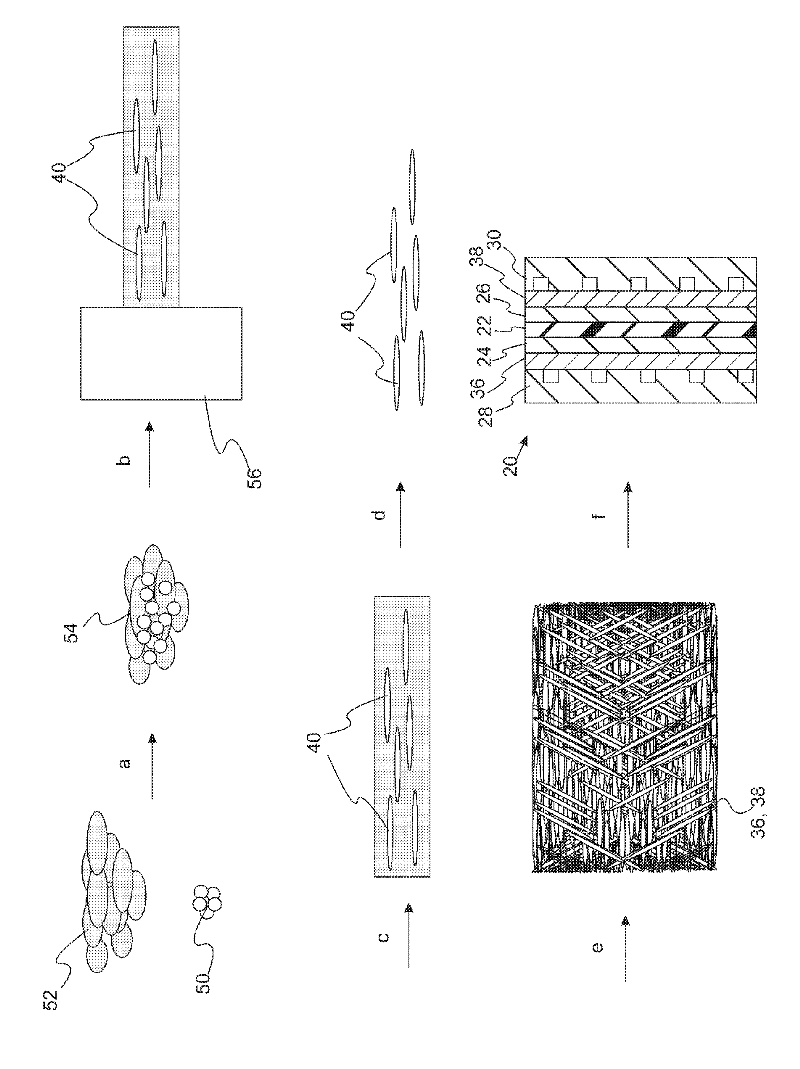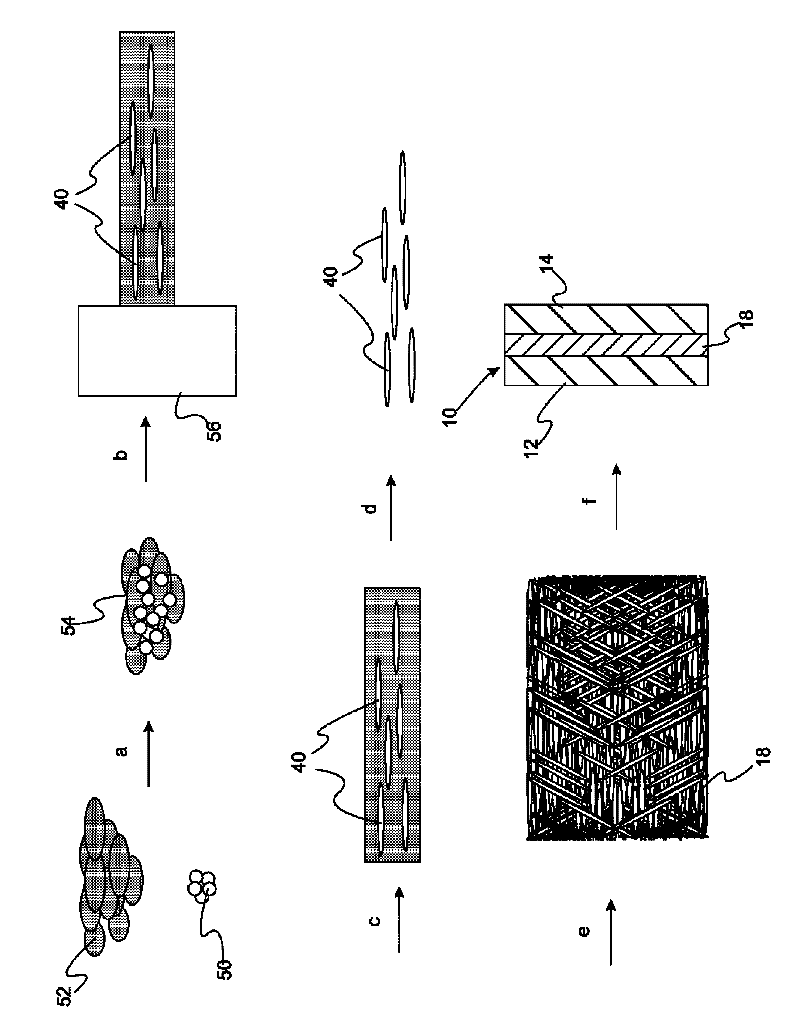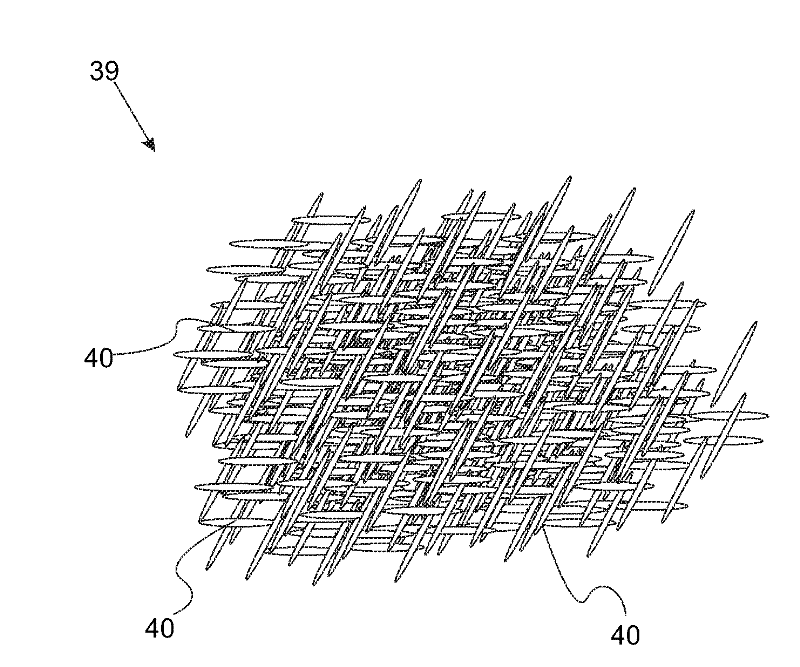Battery separator
A carrier resin, fiber sheet technology, applied in the field of porous pads
- Summary
- Abstract
- Description
- Claims
- Application Information
AI Technical Summary
Problems solved by technology
Method used
Image
Examples
Embodiment 1
[0069] Example 1: Extruded micro and nanofibers of low molecular weight polyethylene.
[0070] Polyethylene powder (7,700Mn, 35,000Mw, Aldrich catalog number 47799-1KG, 1 g) was mixed with poly(2-ethyl-2- Oxazoline) (50,000 Mw, Aldrich 372846-500G, 9 grams) was blended in a Waring blender. The powder was brushed into the hopper of a laboratory mixing extruder (Dynisco, LME) operating at a head and rotor set temperature of 140°C, with the drive motor operating at 50% capacity. The extrudate was drawn at 1 ft / sec and wound onto a Dynisco Take-Up System (TUS). The resulting extruded strands ( Figure 4A ) suspended in three glasses of water. poly(2-ethyl-2- oxazoline) were dissolved from polyethylene nano- and microfibers with widths ranging from 500 nm to 10 microns and undetermined lengths (but typically greater than 1 mm in length). The fibers were isolated by filtration, washed with water, filtered, and suspended in isopropanol. Figure 4BAn image of the fiber is prov...
Embodiment 2
[0073] Example 2: Extruded polyethylene micro and nanofibers
[0074] The resulting material (1 gram) was mixed with poly(2-ethyl -2- oxazoline) (9 g) were combined and extruded to obtain nano and micro fibers. The processing conditions and properties of the nano and micro fibers are described in Table 1.
[0075] Can be combined with poly(2-ethyl-2- oxazoline) to process higher performance polymers into ultrafine fibers. Processable polymers include polyethylene, polypropylene, polylactide, polyolefin, polycycloolefin, polyester, polycaprolactone, polyperfluorocyclobutane, polyamide and other extrudable polymers.
PUM
| Property | Measurement | Unit |
|---|---|---|
| thickness | aaaaa | aaaaa |
| thickness | aaaaa | aaaaa |
| width | aaaaa | aaaaa |
Abstract
Description
Claims
Application Information
 Login to View More
Login to View More - R&D
- Intellectual Property
- Life Sciences
- Materials
- Tech Scout
- Unparalleled Data Quality
- Higher Quality Content
- 60% Fewer Hallucinations
Browse by: Latest US Patents, China's latest patents, Technical Efficacy Thesaurus, Application Domain, Technology Topic, Popular Technical Reports.
© 2025 PatSnap. All rights reserved.Legal|Privacy policy|Modern Slavery Act Transparency Statement|Sitemap|About US| Contact US: help@patsnap.com



